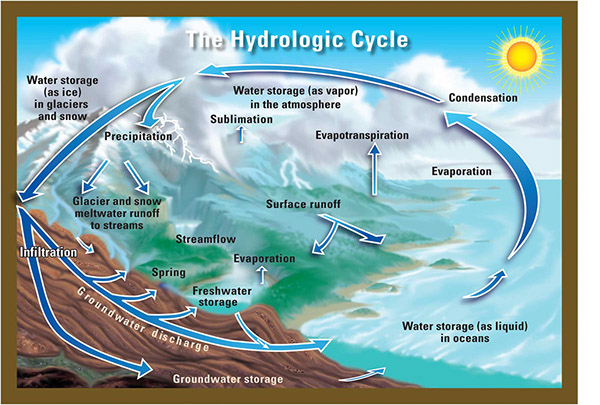Professional Paper 1386–A
Select image for high resolution and Save to download  Figure 2–1. The global hydrological cycle. Water evaporates from oceans and lakes and precipitates on land as rain or snow. The cycle transports runoff from rivers and streams, by subsurface movement through aquifers, through animals, plants, and other organisms, through the soil, and stores water in oceans, lakes, and glaciers. Modified from U.S. Geological Survey, 2009, Water science for schools: The water cycle: accessed 23 February 2010, at http://ga.water.usgs.gov/edu/watercycle.html. |